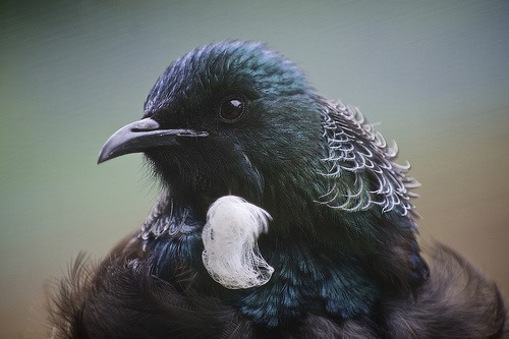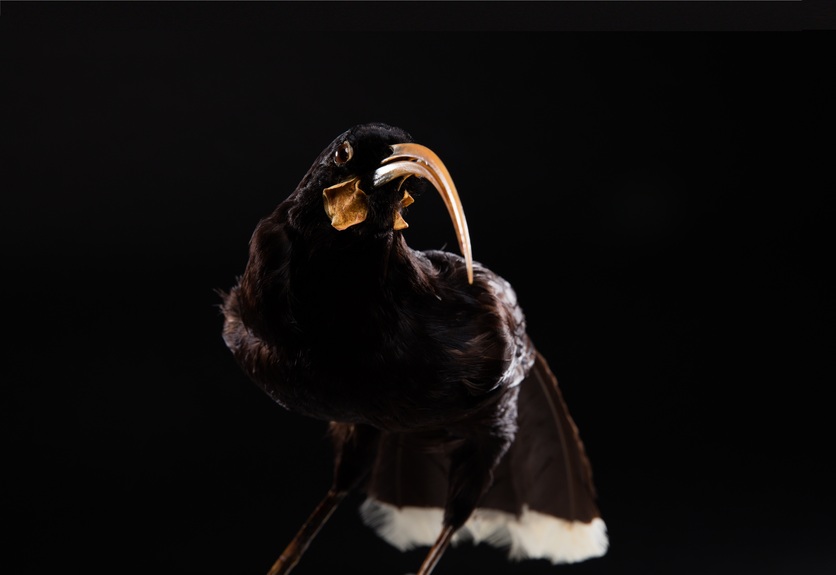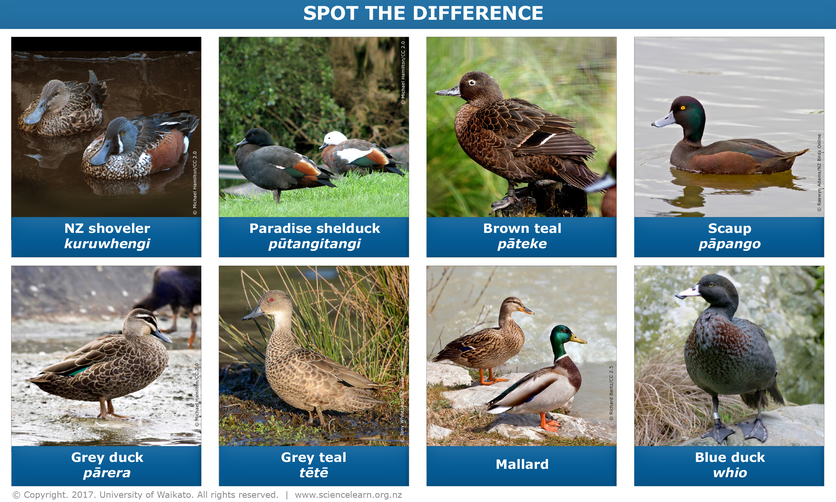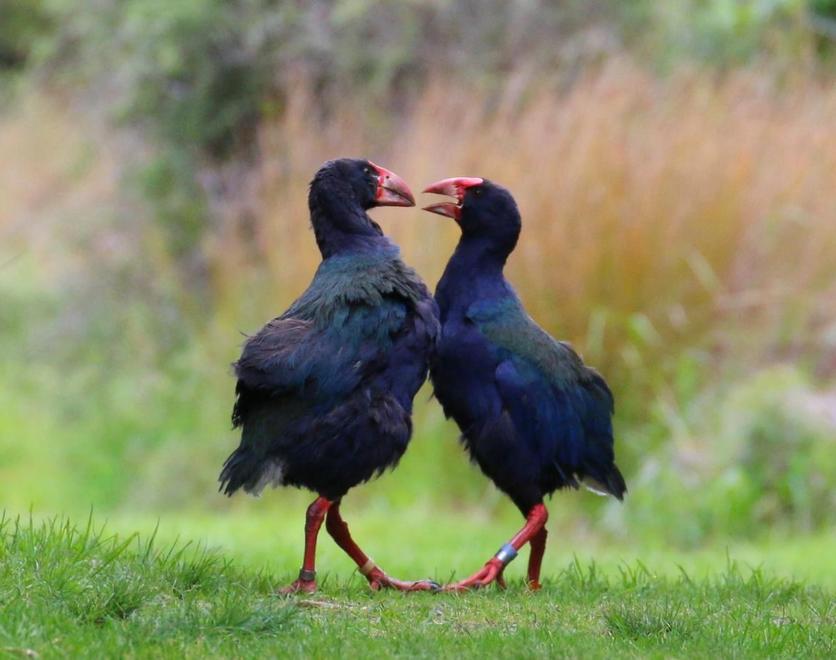New Zealand is world famous for its unique birdlife. In our resources on conserving our native birds, we look at the issues surrounding the conservation of some of our threatened bird species.
New Zealand birds have evolved in isolation from other countries over millions of years. The arrival of humans in New Zealand brought many threats to these bird species, including the introduction of mammalian predators, vegetation being burned to clear land, which destroyed vast areas of birds’ habitats, and birds being eaten by early settlers.
Over a period of time, certain bird species have become critically endangered or extinct as a result of predation and habitat loss. Other bird species have survived because they have been able to adapt to different habitats and diets. Still others exist with the aid of a protected environment, such as the kākā.
Conservation is important in maintaining biodiversity, which sustains ecosystems, preventing the loss of genetic material from the gene pool and recognising the value that certain species have to people.
Our resources look at the threats to our endemic birds in particular and explore different types of conservation techniques and methods of predator control.
The importance of the Bird of the Year campaign
The Bird of the Year is an annual competition, and the Science Learning Hub is a big supporter – see our campaign videos for the huia, ruru, takahē and toroa. In 2023, Forest & Bird included five extinct species in its annual Bird of the Year competition. Read why this was important in Call of the huia: how NZ’s bird of the century contest helps us express ‘ecological grief’. The pūteketeke (Australasian crested grebe) was the ultimate winner, thanks to a global campaign by British-American comedian John Oliver.
Science concepts
Conserving native birds covers three key science concepts:
- structural, behavioural and physiological adaptations
- birds' roles in the ecosystems
- and the differences between endemic, native and introduced species.
Meet our scientist
John Innes works on a wide range of restoration projects. These include getting tūī and bellbirds back into Hamilton and surrounding environments. Local government has used research he has been involved in on tūī movements, behaviour and nesting success to develop the Hamilton Halo project.
Take up the challenge
Student activities form an important part in our collection of resources on conserving our native birds. Educators may wish to start with this unit plan. Kim MacPherson, the teacher behind these resources shares how she used Conserving native bird content to teach active reading in this article and in this professional learning development (PLD) webinar.
Hands-on activities include Exploring genetic variation and Making a tracking tunnel. The New Zealand bush ecosystem and Classifying bird adaptations activities use cards and literacy techniques to explore key science concepts. Ethics in bird conservation provides issues for robust science debate.
Can we make New Zealand pest-free? is a series of lesson plans that involve students in the quest to conserve our native species.
Read about students taking action for bird conservation in the Connected article Bringing back the birdsong.
The recorded PLD webinars Pest detectives and Eco-explorers use Department of Conservation and Hub resources to help teachers scaffold student learning opportunities and ecological investigations.
New Zealand Garden Bird Survey
Te Tatauranga o ngā Manu Māra o Aotearoa | New Zealand Garden Bird Survey is the country’s longest-running citizen science project. The project aims to collect data about the types and numbers of common garden birds in our own backyards. The survey is done once annually during a particular window of time, usually for 1 week starting at the end of June.
New Zealand Garden Bird Survey – a context for learning offers ideas for getting started and making the most of this citizen science project.
Our webinar, in collaboration with Manaaki Whenua – Landcare Research, discusses important science ideas behind the survey, including what happens to the results.
Te Tatauranga o ngā Manu Māra o Aotearoa – resources for kura curates teaching and learning resources developed specifically for kaiako and tauira. It includes The New Zealand Garden Bird Survey – inquiry cycle, which houses animated videos that introduce the project and lay down the challenge to take action for our manu. Both resources are in English and te reo Māori. Use the View in te reo Māori buttons to switch to the reo Māori version.
Meet our native ducks
The Hub has a set of resources featuring some our aquatic bird species. Introducing New Zealand ducks introduces nine duck species, including endemic, native, naturalised and introduced species. Learn about ducks' conservation status in Who's who in the duck world. Use knowledge about the ducks in the activities Duck dominoes, Which duck is which? and Mixing and matching ducks.
Fantastic whio feathers and the activity Whio feathers – what are they for? explores the functions and adaptations of duck feathers.
Watch recorded teacher PLD webinars to learn about conservation inquiry, using the whio as a context: Diving into inquiry with whio, Why learn about whio?, Inquiry outside the classroom and Taking action for conservation.
Meet the takahē
The Hub has extensive resources on the takahē – a true conservation icon! Takahē – an introduction provides an overview of the resources. They cover key biological concepts including ecological niche, evolutionary history, population biology and population genetics. New genetic research in 2023 using palaeogenetic techniques has shed new light on this iconic species. Nothing was known about takahē when they were rediscovered, so conservation efforts have been trialled and adapted over the years. Although their population numbers are on the rise, takahē still face many threats.
Use information from the articles to complete the student activities. Abiotic and biotic factors for takahē explores the interrelationships associated with takahē and the Murchison Mountains environment.
The interactive – Planning pathways using takahē resources groups resources from the Hub and ZEALANDIA, including resources designed specifically for senior biology Achievement Standard AS91158.
Satellite monitoring
Build a satellite to monitor toroa/northern royal albatross! Learn about these amazing birds and how satellites are helping them in this article. Use this interactive to build the satellite and then analyse the data you’ve collected in this activity.
Analisye sateliite iamges and help scientists establish valuable baseline data about the numbers, locations, habits and health of penguins in a range of Southern Ocean sites in the citizen science project Penguin Watch.
Connected content
Read about students taking action for bird conservation in the Connected article Bringing back the birdsong. These Connected articles feature the importance of observation and data collection: The takeaway table, What Alice saw and Keep your cat inside.
Professional learning development
Explore the science concepts that underpin knowledge and understanding about birds and their structure, function and adaptations.
Citizen science projects
Check out the citizen science projects New Zealand Garden Bird Survey, eBird and Kea Database to see how you could help. Bird adaptations and identification has information to help hone identification skills.
Participate in Bird of the Year
Learn more about the value of the annual Bird of the Year campaign and the importance of humour in science communication. See below our previous campaigns:
- For 2024, we supported the majestic toroa/northern royal albatross.
- In 2023 – for Bird of the Century – it was the turn of the huia.
- In 2022, we supported the ruru and science communication to support bird conservation in Team Ruru!
- In other years, we have campaigned on behalf of the takahē.
Related collection
Ngā manu a Tānemahuta provides a brief introduction to Māori knowledge of manu.
The Science Learning Hub team has curated an introductory collection of resources to help teach about bird conservation. Login to make this collection part of your private collection, just click on the copy icon. You can then add additional content, notes and make other changes. Registering an account for the Science Learning Hubs is easy and free – sign up with your email address or Google account. Look for the Sign up button at the top of each page.
Useful links
Check out our Native birds and Duck duck go! boards on Pinterest for loads of resource ideas.
Download the Department of Conservation report Conservation status of birds in Aotearoa New Zealand, 2021.
The Taonga of an island nation: Saving New Zealand's birds report from the Parliamentary Commissioner for the Environment looks at the desperate state of New Zealand’s native birds, the challenges they face, and what it might take to restore them in large numbers back on the mainland.
This video uses data collected on the eBird website to show the distribution of kākā in Wellington between 2004 – 2014. Look how the number of sightings have increased!
Watch this video from Manaaki Whenua – Landcare Research The tūī story.





